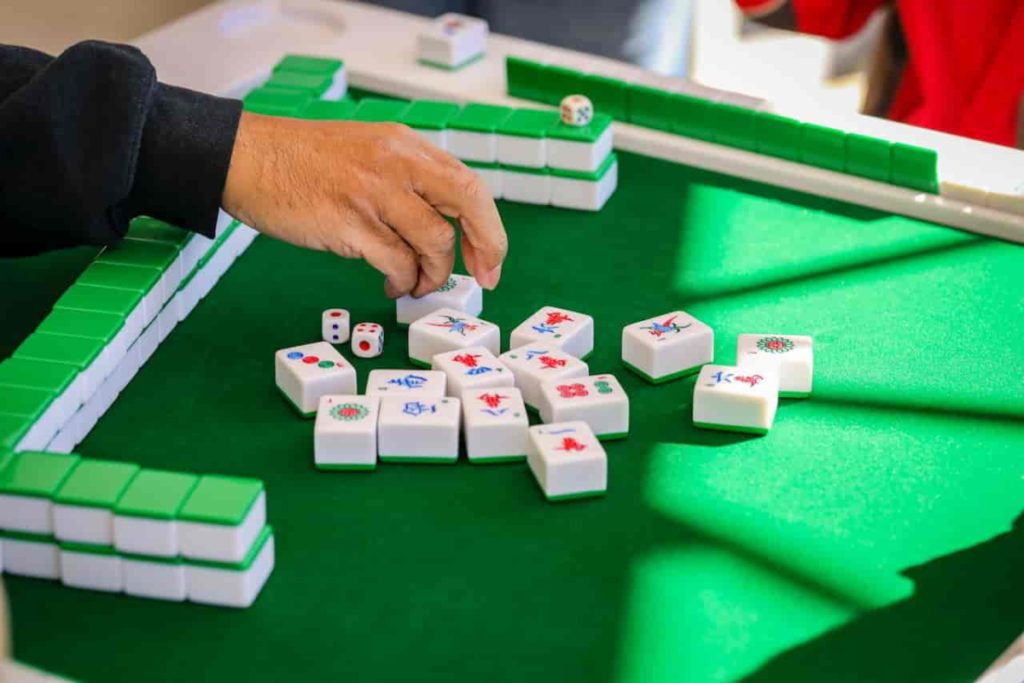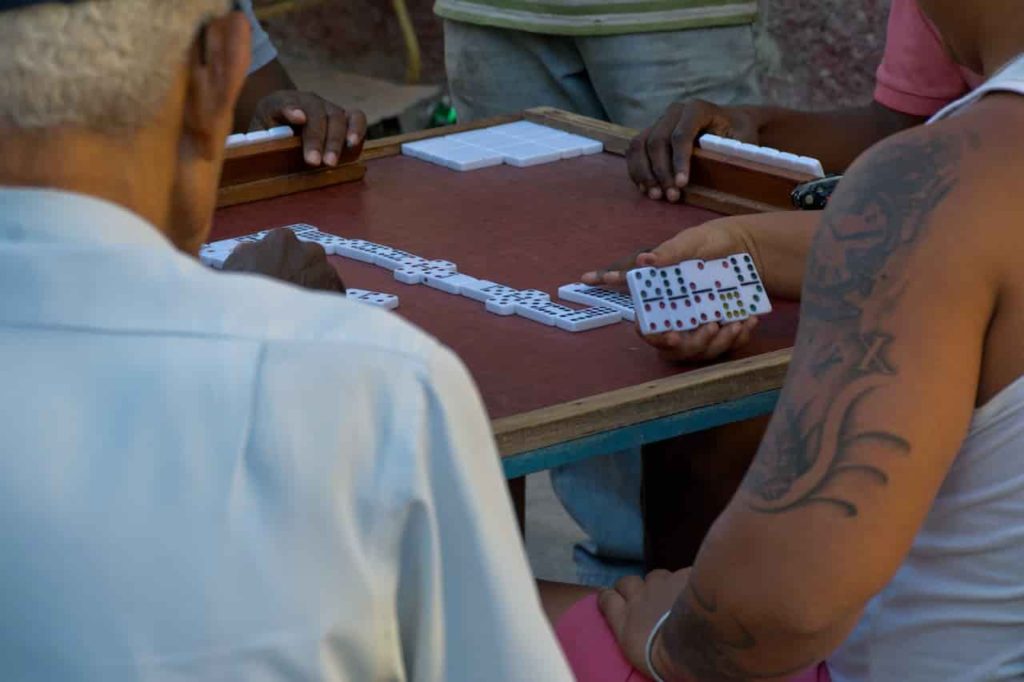Explanation of Mahjong
Mahjong is played with a set of 144 tiles that are divided into three categories: suit tiles, honor tiles, and bonus tiles. The suit tiles are further divided into bamboo, character, and circle suits. There are nine numbered tiles in each suit, ranging from one to nine.
The honor tiles include dragons (red, green, and white) and four wind tiles (north, south east and west). Bonus tiles include flowers and seasons.
In addition to the tile set, there are also specific rules for gameplay that players must follow. These rules include how to draw and discard tiles as well as how to declare winning hands.
Understanding the Tile Sets
Understanding the mahjong tile set is crucial for anyone who wants to play the game effectively. Each tile has its own significance in gameplay; knowing what each tile represents can help players make strategic decisions about which ones to keep or discard.
Moreover, understanding the mahjong tile set makes it easier for players to communicate with each other during gameplay – especially when playing with those who speak different languages since many versions have symbols instead of letters/numbers on them. By knowing what each tile represents without necessarily having to read its name/symbol.
Overview of the Topics
The article will cover all aspects related to understanding the mahjong tile set. We will cover the basics of the tile set, including the number and types of tiles, suit tiles vs. honor tiles, and the four players’ wind tiles as well as special dragon and bonus tiles.
Additionally, we will delve into the different suit tiles in detail – bamboo, character, and circle suits – providing explanations on each numbered tile as well as their respective special tiles. We will explore how to use Honor Tiles such as dragon and wind tiles to form winning hands.
An essential foundation for playing Mahjong is a thorough understanding of its 144-tile set. This article aims to provide readers with a comprehensive breakdown of each tile’s significance in gameplay by covering everything from basic tile set rules to detailed explanations about various suit/honor/bonus-related aspects.
Number and Types of Tiles
Mahjong is played with a set of 144 tiles, each with its unique design. The tiles can be divided into three categories: suits, honors, and bonus tiles.
There are three suits of tiles in Mahjong: bamboo, character, and circles. Each suit has nine numbered tiles from one to nine, making a total of 36 suit tiles.
The honor section has four wind tiles and three dragon tiles, making up seven honor tiles in total. The remaining five bonus or flower tiles are not used until the end of the game.
Suit Tiles and Honor Tiles
Suit and honor tiles are both essential components of the Mahjong tile set. Suit tiles include bamboo (sou or sticks), characters (man or numbers), and circles (pin or dots). There are nine different numbered suit tiles per suit totaling 27 suit tile types per player’s hand.
On the other hand, Honor Tiles comprise the Wind set (East Wind Tile/South Wind Tile/West Wind Tile/North Wind Tile) and Dragon set (Red Dragon tile/Green Dragon tile/White Dragon tile). These honor sets don’t have numeric values; instead, they have cultural significance as symbols such as winds representing seasonal changes while dragons represent mythical creatures.
The Four Players' Wind Tiles
In Mahjong tile sets, there are four players’ wind positions that represent East/West/North/South Winds known as “Zung Jung” positions in Cantonese dialects: East being the dealer position while North is opposite to East; West is positioned on their right-hand side while South sits across from them. Each player receives four wind-tiles at the start of every round to indicate their position within these four positions. These wind-tiles determine which direction specific players will play and some game rules like who goes first.
The Prevailing Wind and Dragon Tiles
The Prevailing Wind is also known as the ’round wind’ in Mahjong. It represents the current round of gameplay and changes after every four rounds. The prevailing wind allows players to know which round they are currently playing.
Dragon tiles are an essential part of the game, with three dragon tiles in Mahjong: Red Dragon, Green Dragon, and White Dragon. The dragon tiles represent mythical animals in Chinese culture; they are not suited or numbered but count as honor tiles.
In each hand, there can only be one type of dragon tile used once converted to another tile’s suit type. Therefore, understanding these basic elements from the Mahjong Tile set is crucial for all new players looking to learn how to play this game accurately.
Understanding Suit Tiles
Bamboo Suit Tiles
Bamboo suit tiles are one of the three suits in a Mahjong tile set. They are numbered from 1 to 9, each with a unique design that distinguishes them from one another.
These tiles are made up of bamboo sticks and are recognized by their green color. Generally, you will find multiple sets of bamboo suit tiles in a Mahjong tile set.
The numbered bamboo suit tiles (1-9) can be used to form sequences when playing Mahjong. A sequence consists of three consecutive tiles from the same suit.
For example, 1-2-3 or 6-7-8 would be considered a valid sequence when using bamboo suit tiles. In addition to the numbered bamboo suit tiles, there is also a special bamboo suit tile known as the Green Dragon tile.
This tile features an image of a green dragon and represents the character “Chung,” which means center or middle in Cantonese. This tile has no numerical value but can be used to complete sets and pairs when playing Mahjong.
Character Suit Tiles
Character suit tiles are another set among the three suits in a Mahjong tile set. They are also numbered from 1 to 9 and feature Chinese characters that correspond with their respective numbers.
These characters consist of basic strokes that represent simple objects like trees or people. Like with bamboo suit tiles, you can form sequences with numbered character suit tiles (1-9) when playing Mahjong.
However, there is also a special character suit tile known as the Red Dragon tile that has no numerical value but can be used in pairs and sets. It features an image of a red dragon and represents the character “Fa,” which means prosperity or wealth.
Circle Suit Tiles
Circle suit tiles make up the final set among the three suits in a Mahjong tile set. They are also numbered from 1 to 9 and feature circles of different sizes on each tile, hence the name. The circle suit tiles have a white color, which contrasts with the green and black colors of the bamboo and character suit tiles, respectively.
As with the other two suits, you can form sequences using numbered circle suit tiles (1-9) when playing Mahjong. Additionally, there is a special circle suit tile known as the White Dragon tile that has no numerical value but can be used in pairs or sets.
This tile features an image of a white dragon and represents the character “Bai,” which means white or pure in Chinese. Understanding the three types of suit tiles (bamboo, character, and circle) is crucial to playing Mahjong successfully.
Knowing how to recognize each numbered tile and special tile allows players to form sequences and sets more easily during gameplay. By mastering these basics of Mahjong’s suit tiles, players can gain an upper hand in this entertaining game that has fascinated people for centuries.
Understaning Honor Tiles
Dragon Tiles: The Mythical Guardians of Mahjong
In Mahjong, honor tiles are the most powerful tiles in the game and can turn the tide of a match. Among these tiles, dragon tiles are considered to be the most valuable because they represent mythical guardians that protect against evil spirits and bring good fortune. There are three dragon tiles in total: red, green, and white.
The red dragon tile is believed to symbolize prosperity and good luck, while the green one represents growth and rejuvenation. The white dragon tile is known for its purity and wisdom.
When a player collects a set of dragon tiles during gameplay, they earn bonus points that can give them an advantage over their opponents. However, these sets can be difficult to acquire due to their rarity and strategic placement on the table.
Wind Tiles: The Power of Directionality
Apart from dragons, wind tiles also have significant importance in Mahjong as they represent directionality and power. There are four wind tiles in total – East Wind Tile (Ton), South Wind Tile (Nan), West Wind Tile (Sha), and North Wind Tile (Pei).
Each player receives a wind tile at random at the beginning of each game round that determines their position relative to other players. For example, if Player A has East Wind Tile while Player B has West Wind Tile during round one; then Player A is considered higher-ranked than Player B.
Players who collect sets of wind tiles throughout gameplay also earn bonus points similar to those earned by collecting dragon sets. These sets signify their ability to navigate through life’s challenges with directionality.
Conclusion
Mahjong may seem like just any other board game but understanding its intricacies can reveal much about Chinese culture as well as its spiritual connections with ancient beliefs. From suit tiles to honor tiles, there’s much to learn and discover about this game. Despite the challenges of mastering the Mahjong tile set, the reward is in understanding the symbolism behind each tile and its place in Chinese tradition.
Whether playing for fun or with a competitive spirit, one can appreciate the rich history and cultural significance that Mahjong holds. By taking the time to understand each tile and its importance, players can not only improve their gameplay but also gain insight into one of China’s most beloved games.







